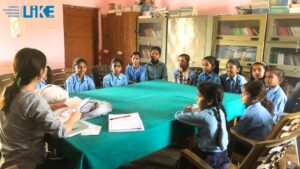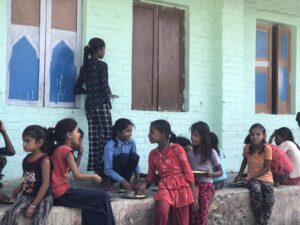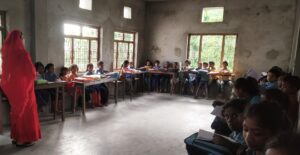Author: Ujwol Thapa
A child’s growth and development should not only be measured based on academic performance in school. While education is undoubtedly important, it is equally crucial to recognize and nurture other aspects of a child’s development. The Capability Approach is a theoretical framework introduced by Amartya Sen and later developed by Martha Nussbaum, Elaine Unterhalter, and other philosophers, and this approach emphasizes that children should have enough opportunity to create a range of capabilities even beyond academic pursuits alone. This approach emphasizes the significance of nurturing a child’s overall development to enable them to acquire a multitude of skills and abilities. In line with the Capability Approach, various scholars have proposed comprehensive lists as conceptual frameworks to assess students’ well-being, surpassing traditional performance evaluation methods.
Leisure activities encompass a wide range of non-academic activities, such as sports, the arts, hobbies, and even social interactions, which are supposed to enhance a student’s learning experience. To learn more about students understanding of their capabilities and agency, 16 FGDs were conducted in May 2023 in nine schools in Rautahat districts: Yamunamai, Durgabhagwati rural municipality, and Rajdevi municipality. 200 students (102 female and 98 male) were taken as respondents, ranging from grades 3 to 8. The FGD offered us a valuable opportunity to assess the students comprehension of the fundamental capabilities they deem crucial.
This study is a part of the research project ” Effectiveness and Scalability of Programs for Children Who Are Out of School and at Risk of Dropping Out in Bangladesh, Bhutan, and Nepal,” supported by Global Partner for Education Knowledge & Innovation Exchange (GPEKIX) and International Development Research Center (IDRC)
A total of 18 different capability lists were presented, among which “leisure activities” emerged as one of the significant themes for analysis. The most prominent disparity became evident when considering the student’s age and gender. It was observed that a substantial number of female students, ranging from grades 6 to 8, allocated a significant portion of their leisure time to household chores and other domestic responsibilities. In contrast, male students tended to engage in fewer household chores than their female siblings. Personal autonomy is not merely the absence of external constraints but rather the presence of leisure time to choose what one wants to do. There are various stereotypes (how to act or behave) and expected gender roles (female and male roles) present in our societies that could impact an individual’s overall growth and development.
Nevertheless, it is essential to refrain from making the assumption that these stereotypes always have a negative impact. One female respondent said, “I genuinely don’t mind fulfilling my household duties. It has become ingrained in my daily routine and does not hinder my ability to attend my classes”. Stagnor implies that “stereotypes matter because they are a part of our everyday lives; they influence our judgments and behaviors towards individuals, often entirely out of awareness” (Stagnor, 2009). Many of our assumptions are made without our conscious awareness.
The students were then made to draw their daily routines on the board. The difference in activities throughout the day highlighted various gender dynamics. The activities listed on the female student’s timetable reflected traditional gender roles and expectations prevalent in rural settings. This included tasks such as cooking lunch, cleaning dishes, maintaining the house, daily commutes, braiding hair, attending school, looking after their siblings, etc. These activities could suggest that girls in this community are assigned domestic responsibilities and prioritize household work and care-giving duties alongside their education.
On the other hand, the activities listed on the male student’s timetable appeared to focus more on academics and recreational activities. These activities included studying, sleeping, daily commutes, playing on mobile phones, roaming around with friends, attending school and tuition classes, etc. This suggested that boys in the community have more freedom and leisure time to engage in activities that are not predominantly tied to household chores.
The illustrations also reflect how girls are often burdened with domestic tasks and care-giving responsibilities from a young age, especially in rural settings. This disparity could have impacted the educational experience of female students, as they may have limited time and commitment to engage in other activities. However, most of the female students said that they were not burdened with the duties that they were assigned. Instead, they have learned to manage their time for their studies, and their parents also support them in focusing more on their studies. Understanding and addressing these gender dynamics among young students is crucial to promoting inclusive education, breaking stereotypes, and enhancing students’ capabilities. However, it is noteworthy that despite these challenges, the majority of the female students interviewed expressed that they did not feel burdened by their assigned duties. There is a positive outlook and support from their families that contribute to their ability to focus on their studies.
Leisure activities are not just mere distractions for children but are essential components of a holistic educational experience. By recognizing and emphasizing the importance of leisure time in the lives of students in rural communities, they could unlock their potential, empowering them to focus better in school and pursue what they are interested in.



